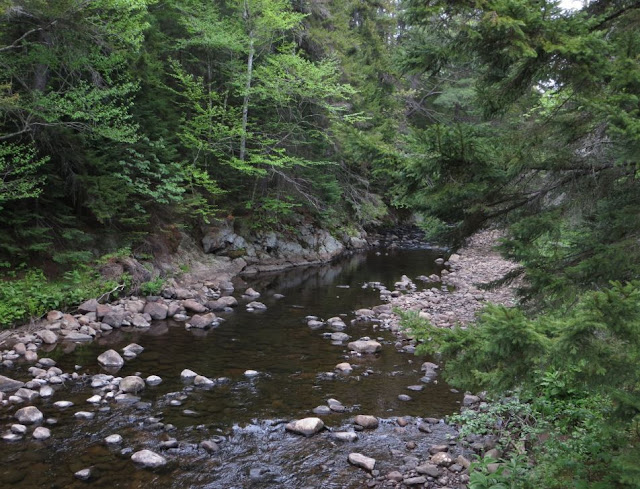The "Old Farm Clearing" trailhead is a major access point for the Siamese Ponds Wilderness. My plan was to follow the main Sacandaga East Branch trail approximately seven miles to the suspension bridge that provides access to to the ponds for which the Wilderness area is named. There's a Lean-to near the bridge but nothing special about that location. It just seemed like a good turn around point and seven miles (each way) was fairly ambitious for this time of year.
I didn't make it quite that far. Over the past few years my hiking mode has evolved into a slow (but steady) ramble through the forest. I peer into the woods looking for trees that are not like the others, plants that shouldn't be where they are, birds, other wildlife, unusual rock outcropping, signs of past human activity, elves and whatever else catches my eye. I take a lot of little side jaunts when I spot something interesting. So even though I left the car at 9:30 I had not reached the lean-to by my 1:30 turn around time. I figured I had maybe three-quarters of a mile left to go on the seven mile distance.
Not reaching the lean-to was of no concern but I was on the lookout for a sign for the "Big Shanty Lumber Driving Camp" mentioned in the 1994 edition of the ADK Guide to Trails of the Central Adirondacks. I didn't have the book with me but I thought it was located about a mile from the lean-to. If that was true, then I should have reached it. Of course, it might have fallen down or it might have been removed by a Hun or Vandal. And not knowing exactly where it was located, or even what it looked like, I might have simply missed it.
Oh well, time to turn back. Except, I could see a small clearing just 50 another yards down the trail. This one looked to be no different than a half-dozen others passed along the way. But why not, I decided to go just that bit further. And there it was, 20 feet off the trail. Just as the ADK book described it, large and rustic.
 |
| Big Shanty River Driving Camp, 1890. |
As for the rest of the hike, it was your standard late May outing in the Adirondacks. I participated in the annual Black Fly Count. And having encountered only a few thousand I can say with confidence that Black Fly numbers are way down this year. Or maybe the little buggers are just bidding their time. Waiting for warmer and wetter weather.
 |
| The Old Farm Clearing. There was some kind of tree farm surrounding this location and the clearing is well on its' way to filling in. |
 |
| From the bridge over the East Branch of the Sacandaga River. Very low water following six weeks of dry weather. |
 |
| East Branch of the Sacandaga (looking north) from near the Big Shanty sign. |
 |
| Flood plain of the East Branch a couple of miles upstream from the Lean-to and suspension bridge. Very low water |








